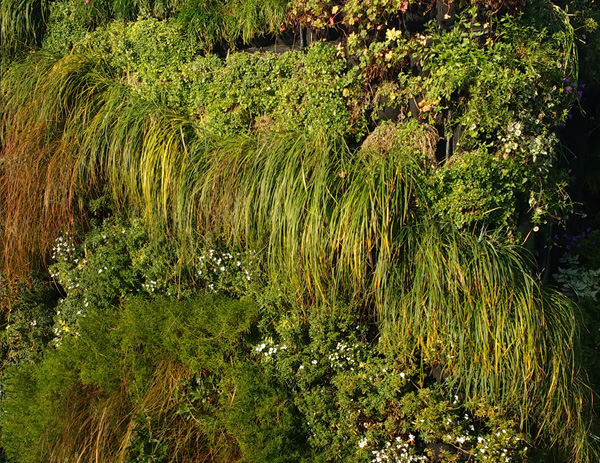Why our biophilic habits should never be broken

It’s been documented more and more that gardening is good for your health. From the physical benefits of digging over the soil, the nurturing element or to the well-being effects and stress-reduction of just looking at a plant or natural scene.
Plants got here before us mammals. Making the jump from water to land by as much as 100 million years earlier than we had first assumed. So they have been with us ‘forever’ thereby creating our biophilic tendencies, our desire to continually connect with nature.
As land is at such a premium gardens become smaller and smaller until they are non-existent and we start to take on new forms of creating ‘natural worlds’ such as balcony’s, windowsills, terrariums, green walls and roofs. Internal gardens are becoming more common with public venues and offices too. Companies are finally waking up to the realism that plants in the working environment boost employee’s morale and productivity and reduce stress. Gone are the days of that half dead cheese plant in the corner that everyone walked past and no one ever watered. Now we have living walls to thank for increasing our company sales figures and staff retention among other benefits. With companies taking on the aftercare, they are far more likely to survive and thrive. In a survey of 7,600 people across 16 countries the second most requested element in a working environment was indoor plants.
Increases in houseplant sales are set to continue with ‘foliage’ being one of the key interior trends for spring and summer 2018. London Fashion Week also highlighted green as one if its upcoming colours for autumn and winter. Houseplant popularity isn’t a new thing though. Romans were keen growers in their villas and bathhouses, and of course don’t forget the Victorians with their love for ferns and aspidistras.
There has been a massive surge in Pinterest users recently of immaculate displays of houseplants all looking top notch without an aphid or withering leaf insight. Instead of just focussing on the idyll we are trying to create, we actually need to start to read into the picture and when you know more about what conditions each of those plants require, you’ll perhaps understand that two months down the line it was obviously never going to work for you. Do your homework thoroughly and you can achieve a display that suits your window aspect and the level of care you can offer. By all means take inspiration, but don’t copy to the letter unless you can be certain it will work.
Although not having tried it myself, I’m attracted to how beautiful a Kokedama hanging garden can look. These are plants grown in balls of compost, wrapped in moss and suspended for decoration. Can I bring myself to create one? Probably not. It’s bad enough in the winter trying to get the washing dry inside without having dripping moss balls suspended over buckets for a few hours at a time after dunking adding to the picture too.
Technology now means even for those rooms which contain little or no light, it is now perfectly possible to grow plants with the aid of grow lights. Once something that would cost an arm and a leg to both install and run, now it can be purchased cost effectively, even sold at a flat-packed furniture giant. So you see there really is no excuse why we can’t all grow something at home, no matter how much space we have. In a world where the population is ever growing and by 2050 70% of this population will live in an urban environment, we all need to create our own little patch of urban Eden in whatever guise it takes.